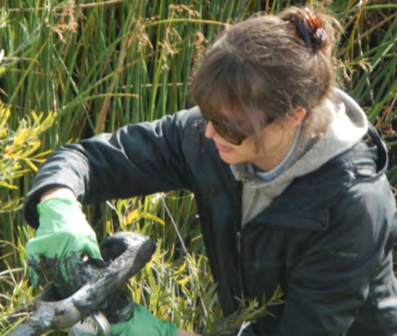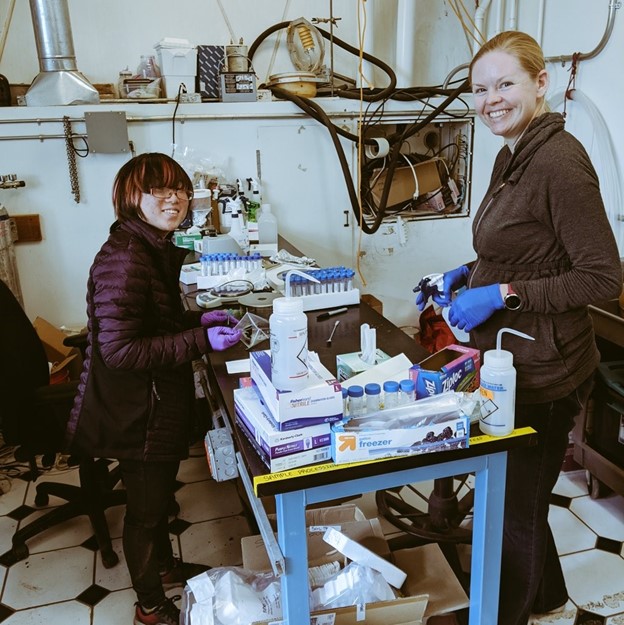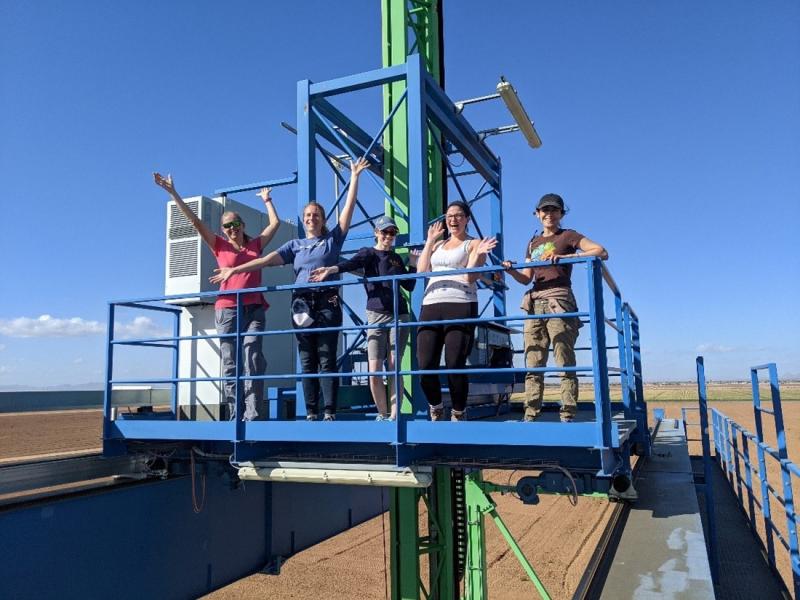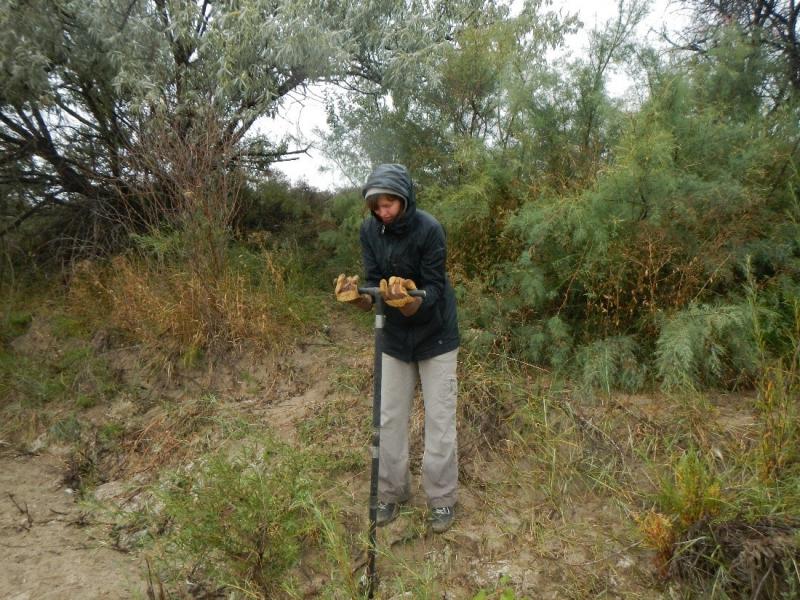Female Researchers Explore EMSL User Science
Scientists discuss improving diversity and representation

Linnea Honeker’s path to science began with a keen interest in climate change and the future of the planet.
As a junior at a Tucson, Arizona high school, Honeker and a friend started an environmental club and an on-campus recycling program.
Fast forward 24 years and Honeker—a first-generation college graduate—has a PhD in environmental science.
Honeker is a researcher on an international team studying the effects of drought on tropical rainforests at the University of Arizona’s Biosphere 2, the world’s largest controlled environment focused on understanding the effects of climate change. The team, led by principal investigator Laura Meredith, is currently conducting research using capabilities at the Environmental Molecular Sciences Laboratory (EMSL) and the Joint Genome Institute. Their research was enabled through funding from the Facilities Integrating Collaborations for User Science (FICUS) program.
Honeker is among more than 487 scientists from around the world who are conducting research with EMSL through awarded proposals.
As part of March’s Women's History Month, we’re featuring Honeker and EMSL user Sharon Bone, a beamline scientist at SLAC National Accelerator Laboratory.
Introduction to science

Bone’s exposure to science began in her twenties.
Through a study abroad program, Bone explored the ecology of coral reefs at the Australia Institute of Marine Science. Bone then worked as a research assistant at Woods Hole Oceanographic Institution, studying how contaminants can be transported from land into coastal waters. Bone says her experience at Woods Hole was crucial to keeping her in science. The researchers at the Woods Hole laboratory encouraged Bone to apply to graduate school, which she hadn't previously considered.
“When you don’t feel like you belong, and you don’t know about the paths open to you in science...I wouldn’t have ended up in science without that intervention,” Bone said.
Graduate school came a bit later for Honeker. While working toward her degree in ecology and evolutionary biology, she interned in a molecular biology laboratory. There, she studied the species classification of an all-female species called rotifers. Honeker obtained her degree and started working in a microbial ecology laboratory at a California fish aquarium company growing large batches of ammonia- and nitrite-oxidizing bacteria and performing molecular biological tests to look at microbial community composition. After working in a coffee shop with a lot of graduate students as clientele, Honeker decided to return to the University of Arizona for graduate school.
Women mentoring women in research

Honeker, an only child who was raised by a single mother, admits she’s always been drawn to female mentors throughout her education and research career.
“Just being female, you can still meet whatever goals you want to, your academic goals and professional goals,” Honeker says. “I have two little girls at home. I want them to be able to look up to me and realize they can reach their dreams too.”
Honeker said the pandemic has presented some unique challenges for women in science. The top challenge has been childcare, the duties for which are presumably placed on women despite their careers, Honeker notes. That can be challenging as a researcher who needs to conduct field work and care for children who can’t be in school or childcare.
As part of a female-led team, her mentors Laura Meredith and Malak Tfaily—an EMSL ecosystem scientist with a joint appointment at the University of Arizona—have helped her find balance between work and home during the last two years.
“It’s nice to have a mentor who has young kids that shows me it is possible to be a professor with young children,” Honeker said. “That makes all the difference in the world to have a supportive environment.”

What women need to succeed in science
Bone has noticed definitive efforts to hire more women in science, which she considers an important step to serving underrepresented groups. She says representation goes beyond gender and is important to improving diversity.
“Having a pipeline is important, but it’s also important to recognize the lack of representation the further you get in your career path,” says Bone.
She starts to think about the composition of a research team as soon as she begins thinking about funding a project. This approach can also be applied to increasing diversity and representation when staging proposals, workshops, and symposiums.
“Sometimes the easiest people to come to mind are the people we see the most,” Bone says. “I have been conscientious of trying to increase diversity, to think about all the qualified people, to improve the diversity in these groups.”
Bone, Honeker, and EMSL user science
Bone has been working with EMSL’s user program since her postdoctoral days in 2013. Her first experience at EMSL was with analytical chemist John Cliff, who helped her understand the techniques for measuring uranium using nanoscale secondary ion mass spectrometry (NanoSIMS).
“The reason I didn’t go through Stanford is because I would have to learn everything about the instrument from the bottom up,” Bone explains. "It’s not plug and play.”
Cliff showed Bone how to process the data, and she then did the data analysis in concert with him.
Since 2021, Bone has been working with EMSL computational scientist Amity Andersen to benefit from her expertise in molecular dynamics and density functional theory.
“The reason EMSL is so attractive is because there are so many instruments and there are so many experts that know how to use the instruments to their best ability,” Bone says.

Honeker’s experience with EMSL has focused on metabolomics, which she was unfamiliar with until she began working with the user facility. Over the last two years, Honeker has worked with EMSL chemist David Hoyt in using nuclear magnetic resonance instrumentation; mass spectrometry imaging scientist Chris Anderton and chemist Dušan Veličković for matrix-assisted laser desorption/ionization spectrometry; and Cliff for NanoSIMS.
“For doing those types of analyses, I wouldn’t go anywhere else besides EMSL,” Honeker says.
Learn more about the EMSL user program and open proposal call opportunities.

